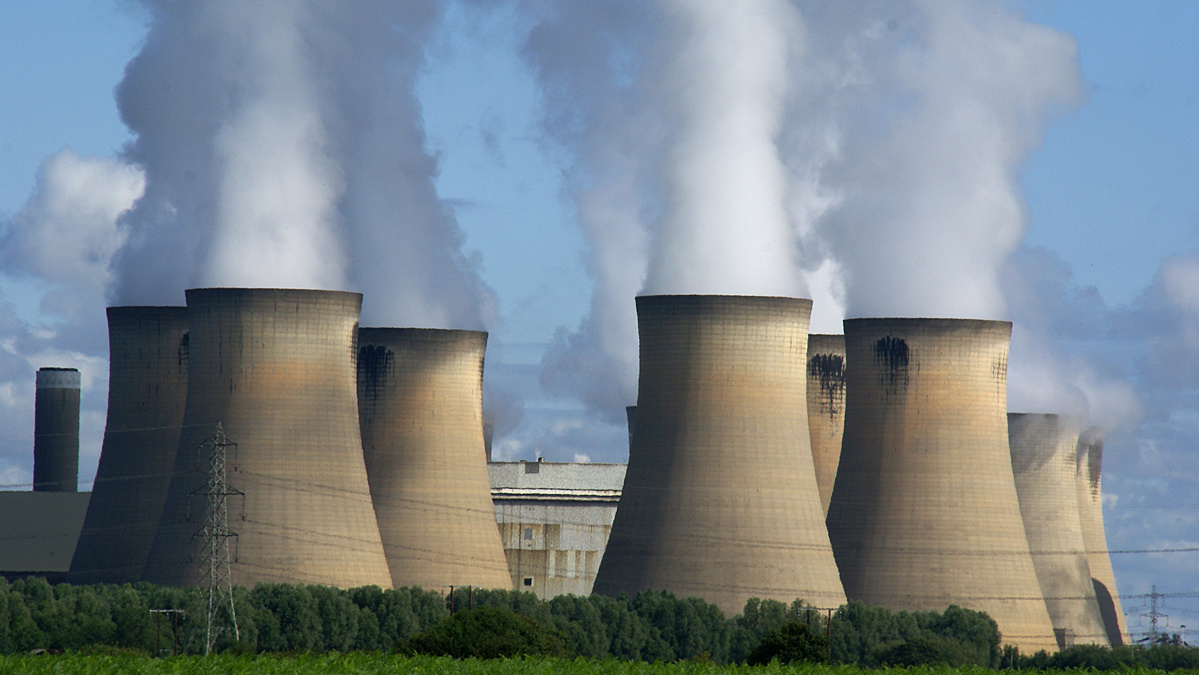
British Government Sued for Approving Europe’s Largest Gas-Fired Power Plant

The Drax Power Station in Carlton, North Yorkshire, England. Ian Britton / Flickr
Client Earth has the green light from a British court to sue the UK government for undermining its own planning authority’s concerns about the climate crisis when it approved Europe’s largest gas-fired power station, according to The Independent.
Planning inspectors had recommended that the government not approve the power plant in North Yorkshire, owned by Drax, because of its enormous carbon footprint. The plant, once fully operational, could produce 75 percent of the UK’s emissions from the power sector, according to lawyers at the environmental law charity Client Earth, as The Guardian reported. Energy, in total, accounts for 20 percent of the UK’s carbon footprint.
Despite the planning inspectors’ warning, Andrea Leadsom, the secretary of state for business, energy, and industrial strategy, approved the project in October. Client Earth quickly stepped in with legal action. Now Britain’s high court ruled that the charity has the legal authority to sue ministers. The case is expected to be heard in a couple of months, according to The Guardian.
When planning inspectors first recommended against the project, they said the massive power plant is at odds with the direction that development needs to go. They said the 3.6GW power plant “would undermine the government’s commitment, as set out in the Climate Change Act 2008, to cut greenhouse emissions” by having “significant adverse effects.” According to The Guardian, the Drax plant was the first big project rejected because of the climate crisis.
Considering the stark warning from the planning authority, Client Earth was angered at Andrea Leadsom’s decision, which threatens the UK’s commitment to net-zero emissions and to combating the climate crisis.
“With scientists ringing the alarm bells for decades, we shouldn’t need to take the government to court over its decision,” said Sam Hunter Jones, a lawyer with Client Earth, as The Independent reported.
“The secretary of state has ignored the recommendations of her own planning authority, and her decision is at odds with the government’s own climate change plans to decarbonize in a cost-effective manner.”
He added: “As the planning inspectorate found, if this plant goes ahead the public risks a carbon budget blowout, or a huge stranded asset that would require propping up by the taxpayer, or a combination of the two.”
Drax, which announced the plan to build the massive plant in 2017, has consistently defended the plant as part of a plan to remove carbon from the atmosphere by 2030, which is a contradiction to what the planning inspectors concluded. A Drax spokeswoman told The Guardian that the company’s carbon negative ambition could be achieved alongside “new, high efficiency gas power capacity as part of our portfolio” and provide electricity when the wind was not blowing or the sun shining.
Leadsom argued that the climate crisis was not a good reason to stop the plant from going forward. “While the significant adverse impact of the proposed development on the amount of greenhouse gases emitted to atmosphere is acknowledged, the policy set out in the relevant National Policy Statements makes clear that this is not a matter that should displace the presumption in favor of granting consent,” she said, as The Guardian reported.
Client Earth has pointed out that the UK does not need the power from the Drax station. It pointed to the UK government’s most recent prediction that the country will need 6GW more of electricity by 2035. However, it has already approved more than 15GW of large-scale gas plants, so the Drax project would mean the UK has three times what the government estimates it will need, as The Guardian reported.

 233k
233k  41k
41k  Subscribe
Subscribe 